American dystopia is deeper than guns and mental illness
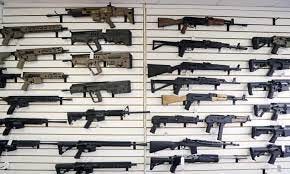
After 18-year-old Salvador Ramos massacred 19 children and two teachers in Uvalde, Texas, and another young man, Payton Gendron, shot to death 10 Black shoppers in Buffalo, New York, the usual arguments began. Liberals blamed the easy availability of guns; conservatives said the killers were mentally ill. Both of those arguments contain some truth, but both ignore the deeper causes, the reasons why these tragedies keep happening.
Yes, the USA has far more guns per capita than any other country, but other heavily armed populations don’t turn the guns on each other. Obviously, a teen who massacres 4th graders is not well, but very few people with mental illness commit acts of violence. There is a profound sickness here, but society has it. Individuals just act it out.
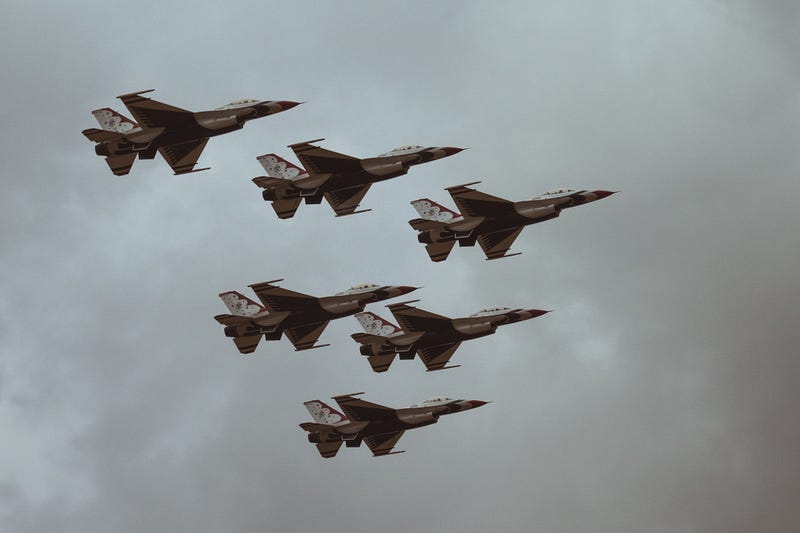
Americans live in a unique dystopia, an empire born in genocide and maintained with violence. Our armies bomb, shoot, and displace millions around the world. Law enforcement officers kill more than three people every day, while beating and imprisoning hundreds of thousands. These are our authority figures doing this, the representatives of our governments, keepers of our highest values. Why wouldn’t young men think killing is a normal thing good people do?
Our culture promotes violence in film, television and video games. Killing makes up a big chunk of the US economy. US corporations like Raytheon and Boeing sold $285 billion of weapons in 2020, about 50% of the world’s total. Private individuals spend about $11 billion on weapons each year. While most US manufacturing has been outsourced overseas, weapons factories are still working overtime.
Violence is built into American geography. Have you ever noticed how many American cities are named Fort Something-or-other? That’s because they started as forts from which to fight Indians. The USA has been at war 225 out of 243 years of existence. Our military occupies over 70 countries today. To quote Black activist H. Rap Brown, “Violence is as American as cherry pie.”
But why? Other countries don’t fight constant wars and don’t have these mass shootings. What are the sources of this violence, and what can we do about them?
We’re all traumatized
Historically, American violence started in Europe. According to Resmaa Menakem, author of My Grandmother’s Hands: Racialized trauma in America, settlers came from England already traumatized. 200 different crimes in 17th Century England were punishable by death, so most people had witnessed more than one hanging, burning, or beheading. Corporal punishments such as whipping were done in public to terrorize people.
In the 15th to 17th centuries, Europeans hunted witches. Thousands of (mostly) women were put to death for practicing healing or for offending some man in power. Can you imagine the trauma of having women you love burned at the stake?
Settlers brought this trauma to America and imposed triple rations of it on the Indigenous Natives and on African slaves. The Pilgrims started killing Indians almost as soon as they arrived in Massachusetts. African-Americans and Indians have suffered centuries of trauma, which for many still goes on.
What does it to people suffer such violence? What does it do to people to perpetrate it? Even seeing violence in person or on media can be traumatic. How many were traumatized by witnessing the 2020 police murder of George Floyd in Minneapolis?
The trauma of inflicting violence, witnessing it or hearing victims talk about it is called “vicarious trauma.” The ongoing depression and anxiety stemming from trauma suffered by our ancestors and passed down is called “historical” or “intergenerational” trauma. The effects of the witch hunts, of wars, slavery and genocide, still live on in most Americans, even if we’re not aware of them. Our history sets us up to become violent, and our culture triggers some of us to act it out.
Culture of violence
As I write this, the blockbuster movie of summer 2022 is Top Gun: Maverick, a celebration of fighter plane pilots. Created in consultation with the US military, Top Gun makes heroes of people who kill for a living.
America’s aggressive wars have been turned into entertainment in movies and television since those media were invented. Older readers might remember Westerns like Gunsmoke and Have Gun Will Travel, set in the American West in the late 19th Century, in which the heroes were the best killers. After some years in which other violent genres like police shows took their place, Westerns are now coming back. Coming attractions at movie theaters often feature military recruiting ads, from which the films themselves cannot be distinguished .
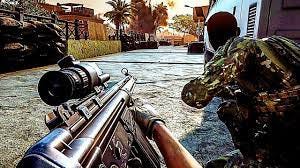
Video games often put their players in the role of killers and award points for killing well. First-person shooters wander through hellscapes, killing monsters and bad guys. When the player gets shot, it doesn’t hurt. They just start another game, and some of those players grow up to steer (by video) armed drones that kill people in places like Pakistan and Ukraine.
US armed forces visit violence on people all over the world and are treated as heroes in the media for doing so. Violent police are credited with defending our safety. How could a young man looking for something to do with their life not consider the path of violence?
Sri Lankan philosopher Indrajit Samarajiva wrote of politicians’ response to the shootings in Texas and New York, “Transport Secretary Pete Buttigieg said, ‘I did not carry an assault weapon around a foreign country so I could come home and see them used to massacre my countrymen.’ They really don’t get it, do they? This is why your countrymen are getting massacred. The American culture and commerce of violence cannot be contained to ‘foreign’ countries.”
Violence takes over our political language. To US leaders, war is the preferred metaphor for all they do, and these metaphorical wars involve real violence. The War on Drugs caused huge increases in violent crime and in police violence. It led to the incarceration of over a million people, disrupting families and communities. The War on Poverty involved police raids on poor households (almost all Black) to ensure nobody was violating welfare rules. This program broke up Black families by excluding fathers from their children’s households.
Alienation and Anger
Even growing up in a violent culture, most people never kill anyone. Even if their leaders commit crimes daily, what drives people like Ramos and Gendron to do monstrous things most of us would never do? After all, they are giving up their own lives to kill people who never did anything to hurt them. We actually know some of these answers.
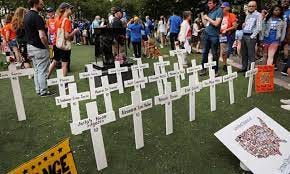
Psychologists Jillian Peterson and James Densley have studied, interviewed, and written about school shooters and other mass shooters. These men are alienated, meaning they don’t feel connected to their communities or families. Peterson told an interviewer, “There is usually a history of abuse, bullying, maybe sexual abuse, hopelessness, despair, isolation, self-loathing, oftentimes rejection from peers.”
Living in a culture that idealizes material wealth above other values, and in a time when wealth is increasingly hard to get, how can young people feel good about themselves? How many will turn against a society with such unfair and hypocritical expectations? People with strong families who treat them well, religious ties, social connection or grounding in nature might not lash out, but those who are abused and isolated might find enemies to attack, usually powerless enemies.
Dr. Peterson says, “They start asking themselves, ‘Whose fault is this?’ Is it a racial group or women or a religious group, or is it my classmates? The hate turns outward. There’s also this quest for fame and notoriety and also despair. Nearly all mass shootings are suicides. When you say, “I want to shoot the school tomorrow,” you are also saying, “I don’t care if I live or die.”
We could call this anger and despair a mental health problem, but when a behavior is common, by definition it’s not a mental illness. It’s a social illness, and the USA calls that illness “freedom.” America idolizes individualism and self-reliance; being alienated from others is called “independence.”
This philosophy is harmful enough in good times, but now people face insecure housing, food, and futures. They doubt they will be able to raise families or succeed at anything. If you’re free and you’re suffering, you must be a failure. Isolation disguised as freedom creates misery and anger.
American “freedom” involves frequent use of guns and cars. In 2017, Fox News host Bill O’Reilly, then the highest rated figure on TV, said of the gun massacre of 57 people in Las Vegas, “This is the price of freedom.” O’Reilly may not have considered that price worth paying, but a lot of Americans do. A poll taken after Buffalo and Uvalde found that 40% of Republicans agreed with his statement. What kind of freedom is it when you can’t go to school or to a music festival without fearing for your life?
Alienation from Nature
We can’t really understand the depth of American (and European) violence without considering our alienation from Nature. Millions of people go through life in concrete worlds lacking contact with any nonhuman living thing. They never see things grow or regenerate. They never learn the attitudes of caring and reciprocity that Nature shows us every day. They don’t learn to give and to receive, only to buy and sell.
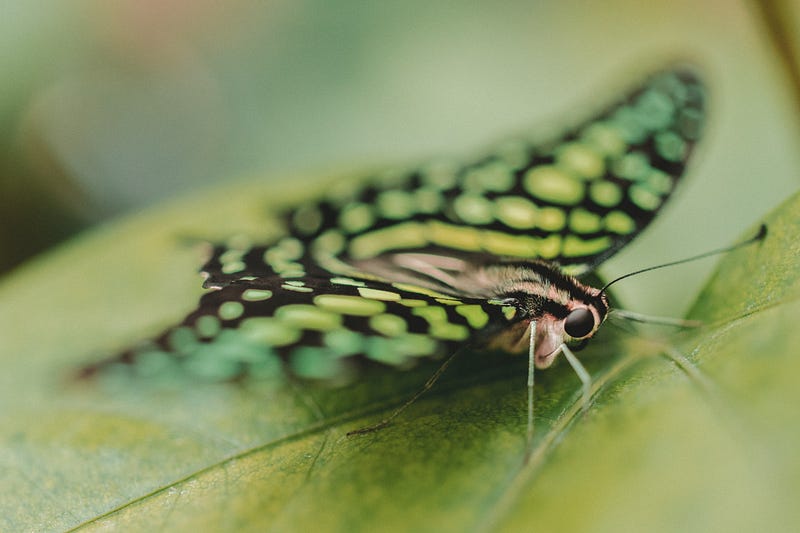
The attitude of capitalism, science, and consumerism to Nature is, “Kill it, take it, and use it up.” If bugs are bothering us, we kill them, even if other creatures need them to live. If birds or rodents share our crops, we poison them with pesticides, even if we poison ourselves in the process.
With such a hostile attitude toward Nature, there is no sense of belonging or connection with Earth, so we don’t feel supported and loved in the world. Those who don’t get enough love from human sources may lash out at the world in response. This despair affects far more people than most of us realize. Salvador Ramos’ massacre was highly praised on some online forums. The Department of Homeland Security warned that some online were calling for widespread copycat shootings.
Racism and social division
You’ve probably noticed that some of the gun massacres are motivated by racism or misogyny, usually explicitly targeting Black people or women, although sometimes Muslims, or Jews, or gays. Identifying groups as evil or subhuman makes it easier to kill them, but many other shootings do not seem racially motivated. They’re acting out a culture of death, of which racism and woman-hating are part..
How do we stop killing each other?
Obviously, guns ARE a big part of the problem. I believe guns should be regulated like cars (which also kill.) One should need to take a class, pass a test and a background check, and get a license to buy a weapon. Assault weapons should be banned. But gun control will be an extremely difficult project when 40% of the people value gun rights so highly. And gun control won’t stop the stigma and despair that drove Salvador Ramos or the racist ideologies and anger that drove Payton Gendron. It won’t make people get along with or care for each other.
How to prevent shootings in a country and culture that exalts violence, material wealth, and individualism while creating poverty and handing out guns? A country that promotes alienation and calls it freedom? I have heard of some possibilities.
● Keep people connected. Have adolescent boys and young men spend time with children, like volunteering at a school. Get those who seem isolated counseling, mentoring, therapy or a support group.
● Investigate and crack down on people promoting and/or planning violence online, whether incels, white supremacists, or other troubled individuals.
● Put all young people in touch with Nature, maybe starting with a garden. Let them do some physical work and see some results.
● Stop creating role models for violence — disarm the police and make them helpers instead of occupiers. Stop wars and glorification of wars in media.
● House homeless people, and in general, move toward replacing cruelty with caring.
● On Second Thought — maybe it would be more realistic to just take away the guns. But we must do far more than that to heal the unique dystopia we have inherited and foisted upon the world.
— — — — — — — — –
Thanks for reading! Please comment, share, or steal. Follow me on Twitter, on Facebook or my blog The Inn by the Healing Path. Hire me for freelancing, editing, or tutoring on Linked In
